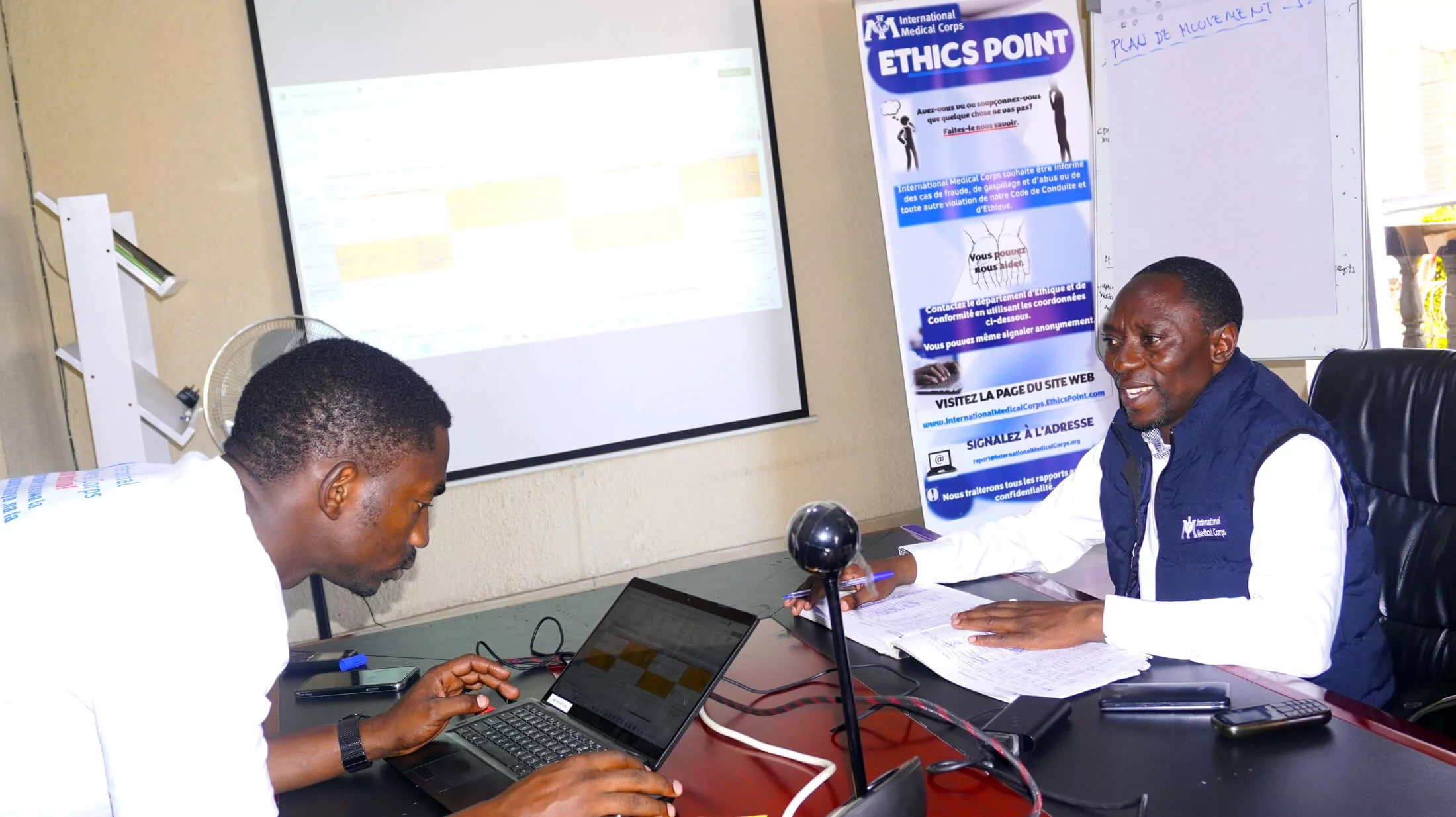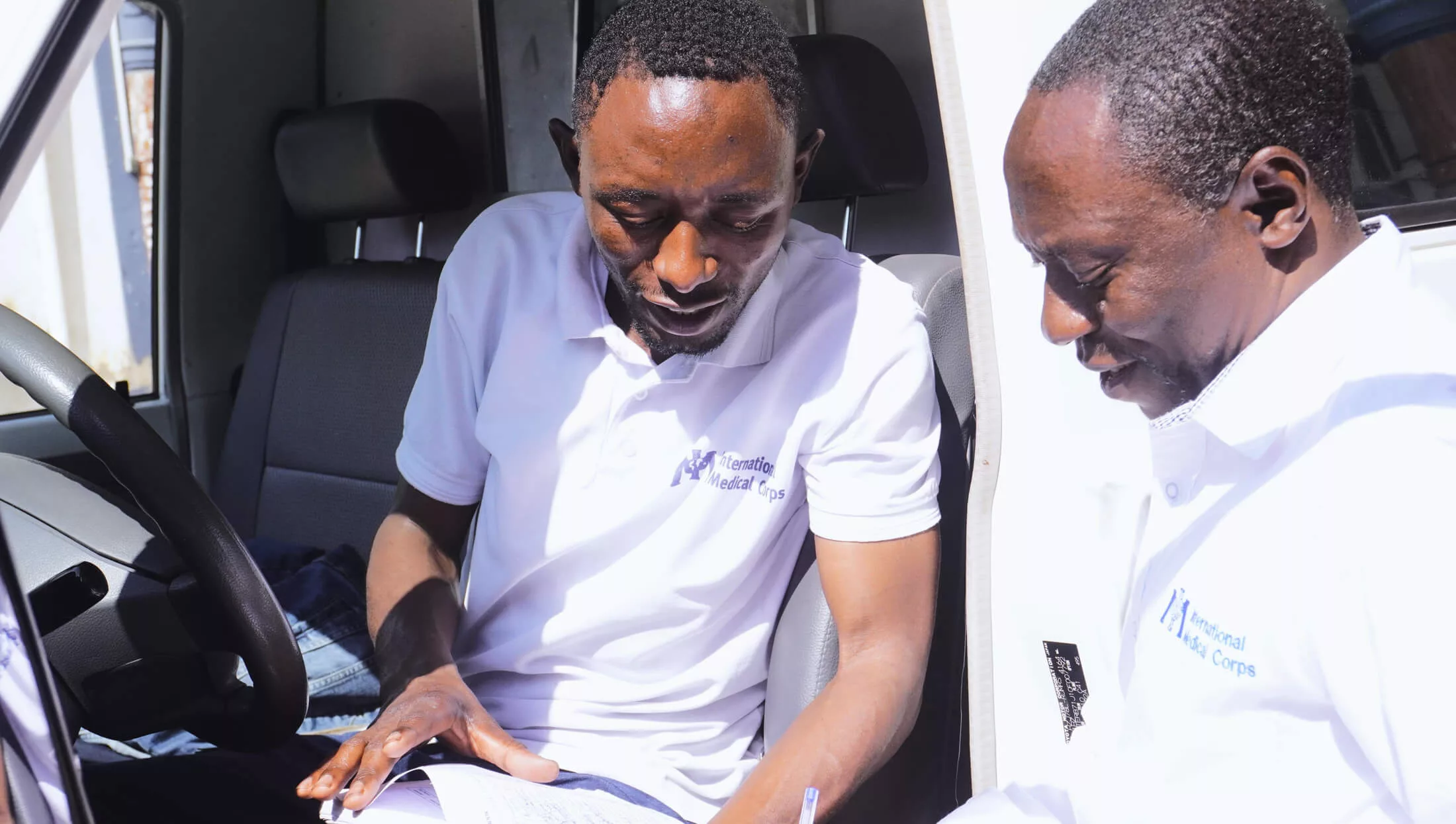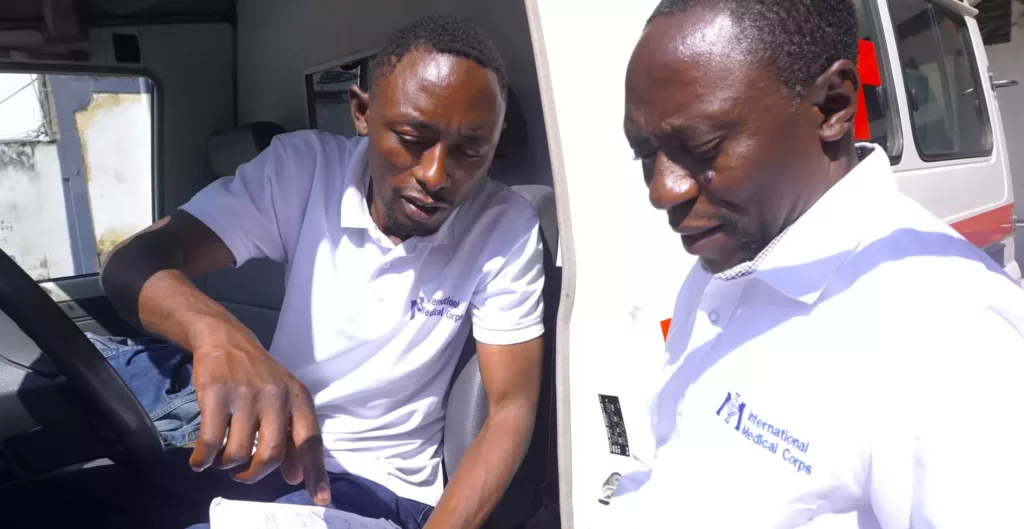As climate change-related catastrophes devastate the communities where we work, International Medical Corps is working hard to adapt. And there is perhaps no part of our organization that can make a bigger impact on lowering our emissions of carbon dioxide (CO2) and other greenhouse gases than the Global Logistics & Supply Chain team, which oversees our fleet of vehicles and works to find supplies for our country teams and Emergency Response Unit.
Emissions of greenhouse gases occur naturally. These emissions absorb energy from the sun and warm our planet—which is good when they are emitted in proper quantities. But greenhouse gases are also generated when fossil fuels are burned for transportation or power. In recent decades, the amount of greenhouse gases emitted from vehicles and energy production has risen precipitously, raising overall temperatures around the Earth and leading to more frequent and dangerous heatwaves, storms and droughts. These weather events have the most adverse impact on the countries where we work—which is just one reason why it’s so important for us to lower our emissions.
“Climate change is affecting where we operate and is making natural disasters more impactful and more frequent,” says Theophane “Theo” Neyme, Consultant – Process, Capacity and Performance Manager for the Global Logistics & Supply Chain team. “There aren’t many options other than to adapt ourselves. Doing so is part of our operational framework—and more and more, it’s becoming a donor requirement. We need to make sure that we are doing something to address our emissions, the way we are operating and the way that our emissions are impacting the lives of our beneficiaries, so that our work isn’t further exacerbating the situation.”
To do that, the Logistics and Procurement teams had to first determine how much CO2 we emit as an organization. Last year, the team calculated the total CO2 given off throughout 2021 by our global vehicle fleet and power generators, as well as by our international travel and internal shipments. Next year, they’ll expand on that baseline by calculating Scope 2 emissions, which include electricity usage in our offices and facilities worldwide.
Once the teams had a basic understanding of our emissions, they could then begin the process of changing our processes and policies.
“A baseline helps us to educate staff about the impact of our emissions,” Theo says. “Then we can start to see if we can change the way we’re operating to reduce our emissions in the future.”
Training for Greener Fleets
The Logistics team developed an online training course on fleet management and carbon reduction, designed to educate drivers and logisticians about the benefits of carpooling, vehicle scheduling and “eco driving.” (To accommodate language barriers and spotty internet access, some drivers received the training in person.) More than 250 staff members have taken the online course—including Haggai Paluku, Transportation and Fleet Officer in our mission in the Democratic Republic of the Congo (DRC).

“I really appreciated the training because it gave us practical measures not only for reducing fuel consumption and CO2 emissions, but also other points to consider, including acceleration and braking, speed control, use of air conditioners, fleet checks and the management of stress when driving,” Haggai says.
Haggai adds that the training helped the DRC mission optimize its fleet by prioritizing early planning of staff movements. Haggai and Logistics Manager Magloire Ntwali are raising awareness among their colleagues about the importance of submitting their activity plans a week in advance so that they can work together with departments leads to determine which vehicles will be the most efficient for the journey. Haggai and Magloire look at the size of vehicle needed, the roads conditions and other factors when determining which vehicle to send on a trip.
The training has also helped the mission to make “greener” vehicle choices—for example, using light vehicles such as sedans whenever possible, especially for travel in large cities such as Kinshasa. For airport trips, they rely on taxi transport to reduce the use of their Landcruiser SUVs and reduce CO2 emissions and fuel consumption.
These changes have been paying dividends.
The team conducted a random analysis of the fuel consumption of vehicles across the entire mission. From August to October 2023, they noted a drop in fuel usage from 5,065 liters to 3,847 liters—a 24% decrease. “This would certainly come from combining trips, reducing certain non-essential trips using the 4×4 SUVs and monitoring high-fuel-consumption vehicles—all measures that we have recently initiated,” Haggai says.

In light of the training course’s success, Global Logistics is rolling out a new course meant for a broader audience that will teach simple, low-cost actions that anyone can take on a daily basis to reduce their emissions. Logistics has also developed guidance for all staff members that covers logistics and supply-chain topics, and provides tips and best practices.
“We are looking for zero-cost initiatives and trying to find solutions that are easy to implement and don’t require large amounts of funding,” Theo says.
Bringing It All Together
Reducing carbon emissions will require some higher-level commitments, too. Joining together with other humanitarian actors, International Medical Corps has been working closely with Fleet Forum—a nonprofit dedicated to cleaner humanitarian transport—to improve our fleet management and lower CO2 emissions.
Because NGOs’ climate change policies are becoming increasingly important to donors, Global Logistics is also developing a proposal addendum that explains each country’s climate change policies to potential donors.
When it comes to supply chain, the team is working on selection criteria to favor sustainable, locally made or recycled products. They’re also estimating the CO2 emissions for a variety of international shipping options. “It’s something that we can bring to decisionmakers to help them understand what the impact is in terms of CO2 emissions when they’re selecting an option,” Theo says.
To bring everything together, the team created a new role dedicated to sustainable logistics and supply chain, hiring a senior logistics officer to create guidelines and tools that are suitable to each context we work in.
Learning from Our Country Teams
It isn’t just Global Logistics that is implementing change: our country missions are also working on ways to lower their emissions.
“There are a lot of ongoing initiatives and best practices in different countries that we need to consolidate and communicate,” Theo says. “A lot of facilities are partially or fully solar powered, or are transitioning to solar power. The idea is to learn from those initiatives to create a common platform where people can exchange information and experiences.”
For example, the global team is working with the Somalia mission on a process for procuring solar equipment. “The outcome of these procurements will be a template to share with every country that would like to do so in the future,” Theo says. “Most of our country programs are already implementing those types of measures, especially around sustainable energies. So it’s important for us to get their insight and their experiences, and share that with all the countries that might not have yet experienced such an approach.”
